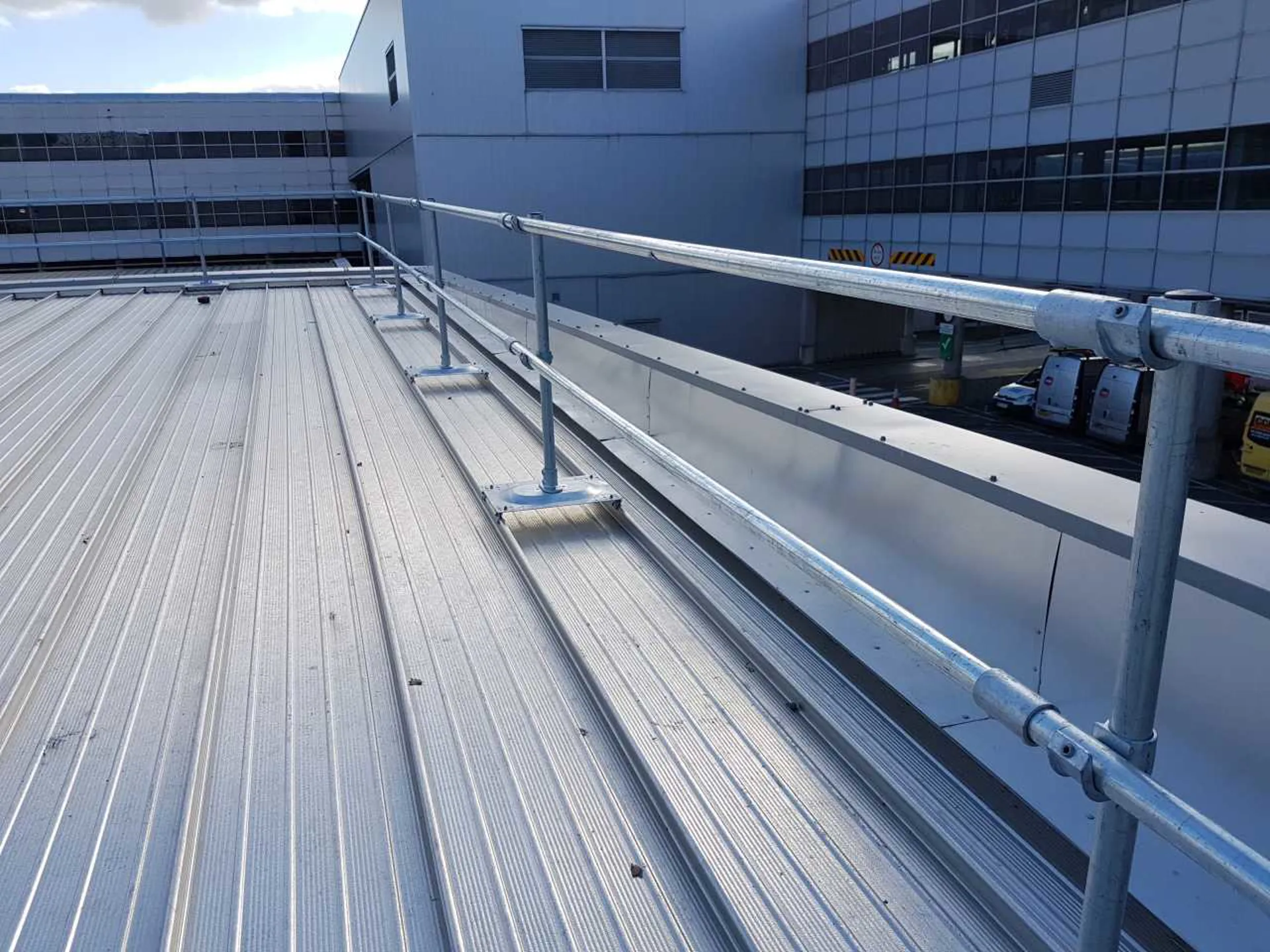

Falls remain one of the leading causes of workplace injuries and fatalities across the United States. In response, the Occupational Safety and Health Administration (OSHA) has set rigorous standards for fall protection in both construction and general industry. At the heart of many fall protection strategies is one key solution: OSHA-compliant guardrails.
Whether you're managing a commercial rooftop, an industrial facility, or a government building, understanding and implementing proper fall protection systems isn't just good practice—it's the law. This comprehensive guide will explore what makes a guardrail system OSHA-compliant, why passive fall protection is a smart investment, and how Kee Guard, a non-penetrating rooftop guardrail solution from Kee Safety, delivers long-lasting protection while exceeding compliance standards.

According to OSHA regulations—specifically 29 CFR 1910.28 and 1910.29—guardrails must meet strict criteria to be considered compliant. These standards apply to general industry workplaces and are designed to prevent workers from falling to a lower level.
Here are the core OSHA requirements for guardrails:
Height: The top rail must be 42 inches above the walking or working surface, with an allowance of plus or minus 3 inches.
Strength: The system must withstand a force of at least 200 pounds applied in any outward or downward direction on the top rail.
Midrail Requirement: A midrail must be installed approximately halfway between the top rail and the working surface to prevent slips or falls through the opening.
Surface: All components must be smooth to prevent injury or snagging on clothing.
Toe Boards (when required): In areas where there is a risk of objects falling onto workers below, toe boards or other protective measures may be required.
Failure to meet these OSHA requirements can lead to costly fines, legal liability, and more importantly increased risk of injury or death. That’s why it’s critical to install guardrail systems that are independently tested, engineered, and certified to meet or exceed OSHA regulations.

Fall protection systems fall into two broad categories: active and passive. While harnesses, lifelines, and anchors are considered active fall protection systems, guardrails are a passive form of protection. That means they don’t require the worker to take any action to be protected. Once installed, they continuously safeguard anyone working near a fall hazard—regardless of training or awareness.
No user training required
No special PPE necessary
Always “on” and protecting
Reduces administrative burden
Minimizes compliance gaps
No tie-off points or supervision needed
Passive systems like OSHA-compliant guardrails are the safest and most reliable solution for rooftops, elevated walkways, mezzanines, and other high-risk areas. They ensure that safety is built into the structure, not dependent on individual actions.

Fully OSHA-Compliant: Independently tested to exceed the strength and performance requirements of OSHA 1910.28 and 1910.29.
Non-Penetrating Design: Kee Guard uses counterbalanced bases that eliminate the need to drill into the roof membrane, preserving the waterproofing system and warranty.
Modular and Scalable: Whether your roof is large, irregular, or has multiple obstructions like HVAC units or skylights, Kee Guard can be configured to fit any layout.
Durability: Constructed from galvanized steel and corrosion-resistant fittings, Kee Guard is built to withstand harsh environmental conditions.
Minimal Maintenance: Unlike welded or painted railings, Kee Guard systems require virtually no ongoing maintenance.
Aesthetically Pleasing: Available in various finishes to blend into the building’s architecture.
Kee Guard provides long-term value by reducing maintenance, avoiding roof damage, and delivering a safe, permanent solution that evolves with your building’s needs.
To understand why Kee Guard has become a go-to for building owners and safety professionals, it helps to compare it with traditional welded or anchored guardrails.
| Feature | Kee Guard | Traditional Guardrails |
|---|---|---|
| OSHA Compliance | ✅ Fully Compliant | ✅ If properly installed |
| Roof Penetration | ❌ No | ✅ Typically required |
| Installation Time | ⏱ Fast, no welding or drilling | 🛠 Slower due to fabrication |
| Modularity | 🔧 Easily adaptable | ❌ Limited flexibility |
| Maintenance | 🧰 Minimal | 🧰 Requires repainting or repairs |
| System Longevity | ✅ 20+ years of performance | ⚠ May degrade or corrode faster |

Kee Safety has over 85 years of experience in designing and supplying fall protection systems. Our solutions are engineered for performance, ease of installation, and long-term durability. But beyond the product, what sets us apart is our dedication to supporting you at every step—from the first safety audit to final installation.
Peace of mind knowing you’re OSHA-compliant
Zero impact to your roof’s warranty
A system that protects workers 24/7, with no user input required

Every elevated surface, rooftop, and edge represents a risk—but it also represents an opportunity to lead with responsibility. Installing OSHA-compliant guardrails is not just about checking a regulatory box; it’s about building a culture of safety that protects your workers, your reputation, and your bottom line.
Kee Guard offers a smart, sustainable solution that meets the strictest OSHA standards while providing flexibility, durability, and peace of mind. Its modular, non-penetrating design makes it ideal for modern rooftops, retrofits. When you invest in Kee Guard, you are investing in a fall protection system that performs every day without the need for constant oversight or retraining.
Take the first step toward a safer workplace.
Request a free rooftop safety audit, speak with a fall protection expert, or receive a customized Kee Guard quote tailored to your facility’s unique needs.
Protect your people. Preserve your rooftop. Comply with confidence.
Contact Kee Safety Today
Don’t take risks with inferior guardrails—choose Kee Guard for superior rooftop safety and long-term performance.

Please fill in your details below and we’ll be in touch shortly.